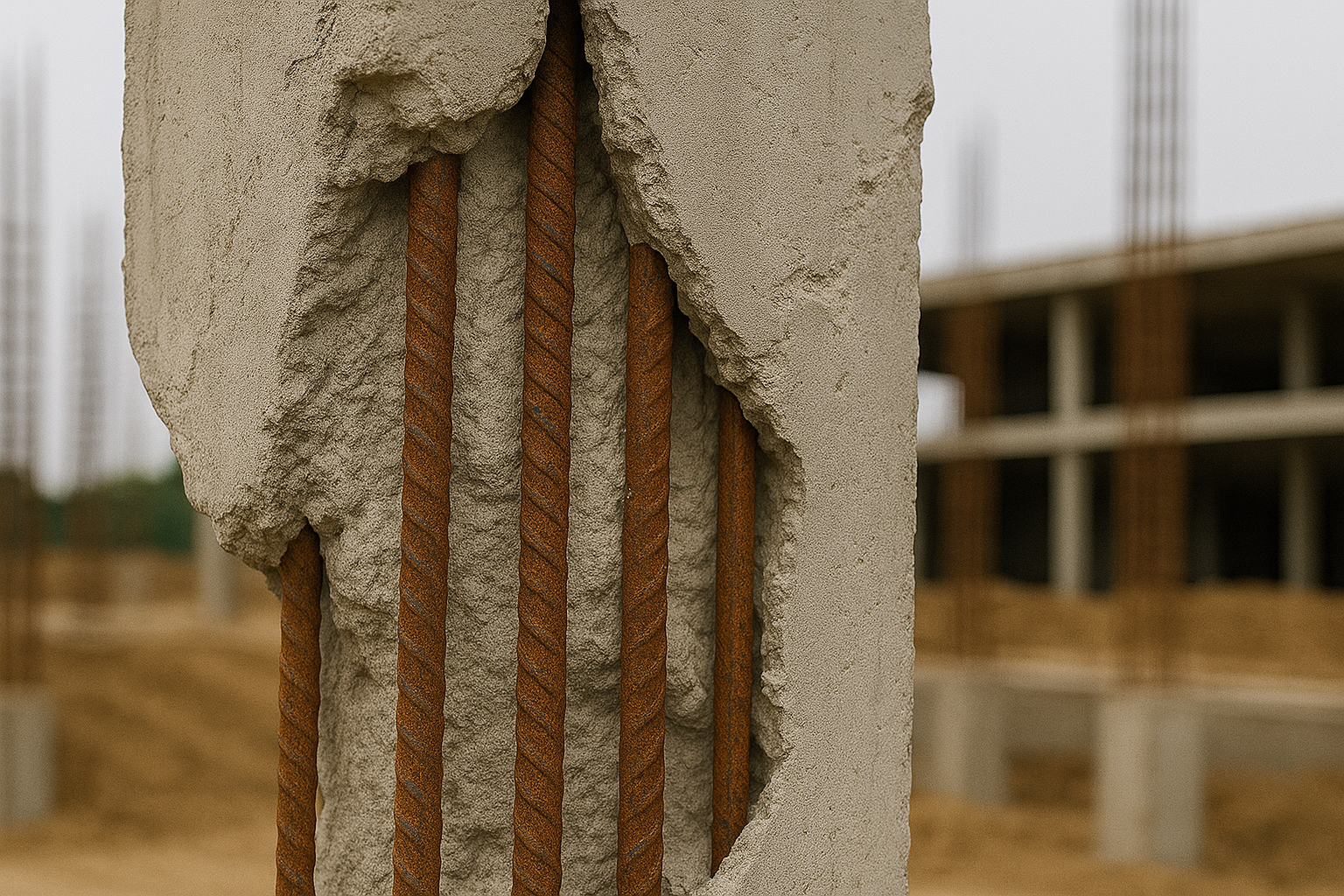Common Mistakes in TMT Bar Usage That Compromise Building Safety

Strong 8k brings an ultra-HD IPTV experience to your living room and your pocket.
TMT bars are the backbone of most modern structures. They carry the weight. They hold everything together when pressure hits. But when something goes wrong with their use, the damage isn’t small. It puts lives at risk.
Construction engineers have to get this part right. Still, mistakes happen. Some are obvious. Others are small but deadly. Let’s go through the common ones and what to do instead.
Also Read : Steel Calculation Of TMT Steel Bars
Why Do TMT Bar Mistakes Happen?
Work pressure, lack of awareness, or trust in the wrong supplier. These are just a few reasons. Most errors come from not paying attention at the right time. Even a small gap in checking can snowball into bigger issues.
Let’s get to the specific errors people make on the field.
Mistake #1: Using the Wrong Grade of TMT Bars
TMT bars come in different grades like Fe415, Fe500, and Fe550D. Each has its own strength and ductility. Many engineers skip the cross-check, especially on smaller sites.
What goes wrong:
The wrong grade leads to reduced load-bearing capacity.
It affects how the structure handles earthquakes or pressure changes.
Example:
A small apartment project in Kerala used Fe415 where Fe500D was needed. Cracks started appearing in slabs after just 18 months.
Fix:
Always check structural drawings. Confirm with the structural consultant before ordering bars. Re-verify supplier labels.
Mistake #2: Ignoring Proper Storage of TMT Bars
TMT bars are prone to rust if left exposed to rain or damp surfaces. Many site engineers ignore this, thinking it won't matter.
But here's the truth:
Rust weakens the bond between steel and concrete. That one skip can ruin an entire beam or column.
Fix:
Store bars on raised platforms.
Use tarpaulin or shade net to cover.
Rotate old stock to the top.
Also Read : Advantages of Steel TMT Bar
Mistake #3: Not Checking for Manufacturer Certification
Too many sites accept deliveries without verifying the batch origin. Fake TMT bars are a real problem in many regions.
Why this matters:
Unbranded or counterfeit bars may look the same. But they often skip critical manufacturing steps like proper quenching and tempering.
Quick checks:
Ask for the BIS certification.
Look for batch numbers and manufacturer embossing.
Test samples in a third-party lab if you're unsure.
Mistake #4: Poor Bending and Cutting Practices
Manual bending on-site using crude tools often damages the bars. It may look fine from outside, but inside? Micro-cracks form. These weaken the steel permanently.
Result:
The bar doesn’t behave as expected during stress. This puts the whole frame at risk.
What to do:
Use bending machines where possible. Avoid sharp bends. Stick to recommended angles and radii.
Mistake #5: Improper Lapping or Splicing
When bars need to be extended, they’re lapped or welded. This sounds simple. But most laps don’t meet the required overlap length. Or worse, they’re welded without understanding heat impact.
This mistake causes:
Joint failure.
Uneven load transfer.
Weak points during seismic movement.
Fix:
Follow IS 456 standards. Maintain proper lapping length. Avoid welding unless approved by the designer.
Mistake #6: Skipping On-Site Testing
Relying only on supplier data is risky. On-site testing is skipped to save time or budget. This is like driving with a blindfold on.
Basic tests every engineer should ensure:
Bend test
Re-bend test
Elongation test
Yield strength test
Tip:
Even a single failed test in a batch is a red flag. Reject it without second thoughts.
Mistake #7: Cutting Bars Too Early
Engineers sometimes cut all bars ahead of time. This leads to waste and shortfall. Or worse, adjustments that affect strength.
Example:
One contractor in Maharashtra trimmed all columns for a duplex project based on an old drawing. When the design changed, none of the cut bars matched.
Avoid this by:
Cutting only what’s needed for the day.
Storing extra lengths safely.
Coordinating with the design team before cutting.
Mistake #8: Inadequate Cover Blocks
Concrete cover protects steel from corrosion. Using stone chips or random materials instead of proper cover blocks compromises this layer.
What happens next:
Water seeps in. Rust forms. Steel loses grip over time.
Simple fix:
Use factory-made cover blocks. They’re cheap and reliable.
Mistake #9: Overlooking Bar Placement
TMT bars should be spaced correctly. But during a rush, bars shift or get tied improperly. This affects load distribution.
Red flags:
Bars too close or too far.
Uneven mesh formation.
Loose tying at junctions.
Fix:
Double-check bar placement before pouring concrete. Use spacers and chairs as needed.
Mistake #10: Trusting Untrained Labor
Many sites depend on laborers to place and tie bars. But if they aren’t trained, they’ll just go by guesswork.
The impact:
What looks neat might not hold up in real stress.
Better approach:
Spend time training the crew. Do regular checks. Explain the why behind bar positions. Use drawings on-site.
Final Thoughts
Steel is not forgiving. Once poured into concrete, it's hidden forever. So, every small mistake stays locked in.
TMT bars aren't just steel rods. They're safety lines. A careless decision can lead to cracks, collapse, or worse.
So, pause before placing that order. Check the brand. Ask questions. Watch how your team bends, cuts, and places them. Quality control isn't just a task. It's a commitment.
Note: IndiBlogHub features both user-submitted and editorial content. We do not verify third-party contributions. Read our Disclaimer and Privacy Policyfor details.


